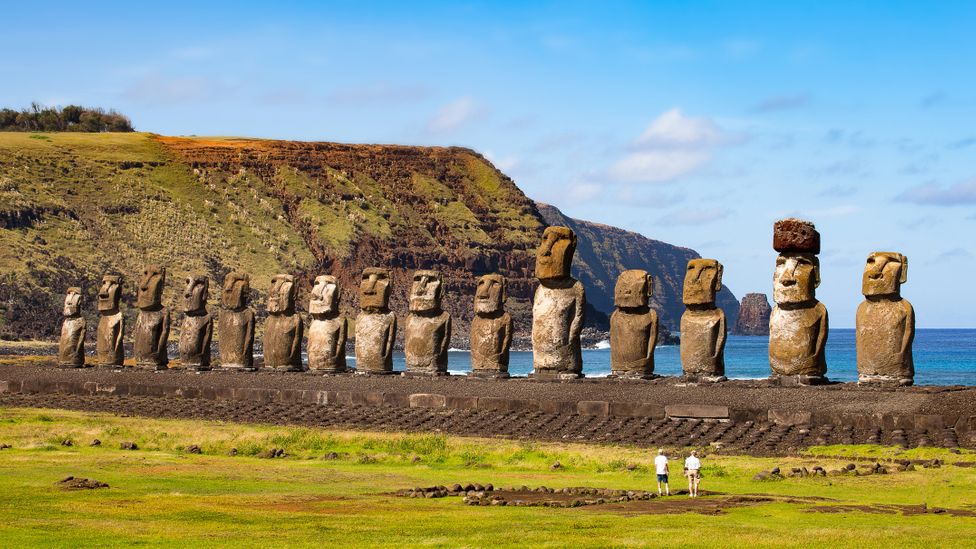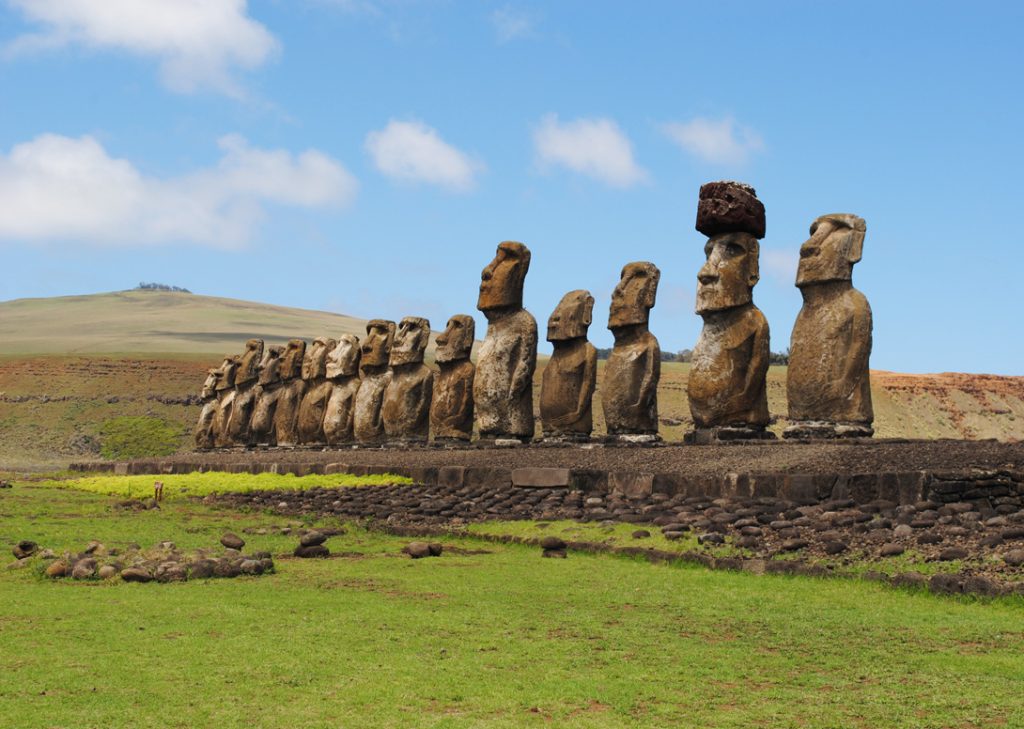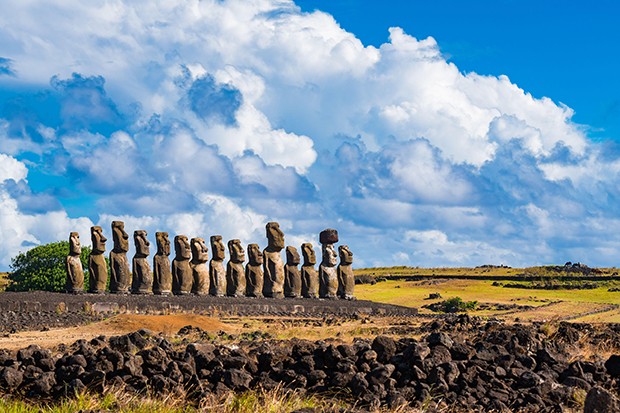Introduction

The Moai Statue is a group of giant stone statues located on Easter Island in the southern Pacific Ocean, and is one of the most famous archaeological sites in the world. These mysterious statues considered cultural heritage created by the indigenous people of Easter Island, representing the wisdom and skills of ancient civilization. However, the mysteries surrounding the production, use, and transportation methods of these giant stone statues have not yet fully solved. This article will introduce the history, design, symbolic significance, and their important position in Easter Island culture and world archaeology of Moai statues.
The Mysterious Land of Resurrection Island
Resurrection Island is located in the southern Pacific Ocean, approximately 3700 kilometers (2300 miles) from Chile, and is one of the most remote inhabited islands in the world. Most of the island is covered with vegetation, but the most eye-catching is the Moai statues distributed in different parts of the island.
Resurrection Island was once a highly developed center of civilization, where residents commemorated their ancestors and gods by creating Moai statues. However, as time passed, the resources on Easter Island were depleted and the ecological environment was damaged, leading to the decline of civilization and a decrease in population.
Design and Production of Moai Statue

The Moai statue is made of basalt on the island, with an average height of about 4 to 5 meters (13 to 16 feet) and a weight of tens of tons. Most of these giant stone statues face inland, but there are also a few facing the ocean. Their facial features are simplified into flat triangles, with protruding eyes and slender lips.
Making a Moai statue is a huge project that requires dozens of craftsmen and years to complete. According to archaeologists’ research, statues made by chiseling basalt out of volcanic craters and transporting it to various production sites on the island. The purpose and technology of statue making remains a mystery to this day, and different scholars have different perspectives on its interpretation.
The Symbolic Meaning of the Moai Statue
The Moai statue is considered a symbol of ancient civilization on the resurrection island, representing the worship of ancestors and the faith of gods. They are placed in important places on the island, such as Place of worship and community Ghetto, and may be used for ritual and religious ceremonies.
These statues also symbolize the spirit of community unity. During the production and transportation process, the entire community usually participates, reflecting the close connection and unity among the ancient island residents.
The Mystery of the Moai Statue
Although there is some understanding of the significance of Moai statues, their production and transportation process remains an unresolved mystery. Archaeologists and scholars have been working hard to find answers about these mysterious giant stone statues.
There are various speculations about the production technology and transportation method of the Moai statue. One theory suggests that statues may have made by using pulleys and rolling wood to roll giant rocks down the crater and then transported to their destination. Some people believe that island residents may use simple wooden slides to push giant rocks down the slope.
In addition, the Moai statue has undergone multiple collapses and reconstructions over the past few hundred years, resulting in many statues now only having half bodies or heads left. These damaged statues also provide important clues for scholars about the production and transportation process.

Protection and Importance of Moai Statue
As a cultural heritage of Easter Island and a precious resource in world archaeology, the Moai statue has received attention for protection and restoration. The United Nations Educational, Scientific and Cultural Organization (UNESCO) has listed Easter Island as a world cultural heritage site, aiming to protect these mysterious stone statues and the cultural heritage behind them.
However, with the development of the tourism industry on Easter Island, the Moai statue also faces the risk of destruction and loss. Excessive tourist trampling and pollution pose a threat to the preservation of these fragile statues.
Conclusion
The Moai statues are a shining pearl in the culture of Easter Island and world archaeology, attracting people from all over the world to explore their mystery and beauty. These giant stone statues represent the wisdom and skills of ancient civilization, as well as the reverence and faith of the residents of Easter Island towards their ancestors and gods. However, the mystery behind the Moai statue has not yet fully solved, leaving many challenges and unknown areas for researchers. When protecting and maintaining these precious cultural heritage, we also need to pay more attention to the importance of Sustainable tourism and cultural protection to ensure that the beauty and mystery of the Moai statue can inherited and preserved forever.

